
Hey everyone! I’ve been teasing this idea for a while now, a book detailing the supposedly true stories from various films with the tag line: “Based on a true story.”
I’ve finished a sample chapter on A Nightmare on Elm Street, as unbelievably there’s a real world influence there, and I’m also researching the Conjuring Films, The Amityville Horror, The Exorcist, as well as a few others.
The working title, as you know I love a pun, is currently Behind the Screams
Enjoy!
A Nightmare on Elm Street – The Real-Life Deaths That Inspired Freddy Krueger
Wes Craven’s A Nightmare on Elm Street (1984) introduced the world to one of horror’s most enduring villains: Freddy Krueger. With his burned face, razor-fingered glove, and ability to attack people in their dreams, Freddy quickly became a cultural icon. He was a symbol of the horrors that lurk where we’re at most our vulnerable: when we’re sleep.
The concept was as brilliantly simple as it was terrifying: what if dying in your dreams meant you never got to wake up?
Unlike our other chapters, with their tales of ghost stories or demonic possessions, Nightmare doesn’t claim to be based on a specific “true haunting.”
But before we go any further? A confession. In the early 1990s, whilst being far to young to legally watch scary movies, I remember seeing Nightmare on Elm Street at a friends party. One thing led to another, down in large part to an older sibling, and we became convinced that Freddy Kreuger was not only real, he was living in our town.
Our evidence was the BT Phonebook. There was an F Kreuger, who lived in a suitably spooky looking house, that backed onto a local park.
We dared each other to knock on his door and run away. As to us? We were being brave and tackling a movie monster. Clearly that wasn’t the case. We were doing nothing more than harassing a poor man whose only misfortune was to share his name with a horror villain.
Eventually, we grew bored, but the irony of us as children causing stress for someone, becoming his fear, is not lost on me.
Wes Craven, the man behind Nightmare on Elm Street, was inspired by real-life accounts of mysterious deaths, ones that blurred the line between dream and reality and left medical professionals baffled.
The film opens on a group of high school students who begin having disturbing dreams about the same man: a horribly disfigured figure in a dirty red-and-green sweater, fedora hat, and bladed glove. His name was Freddy Krueger and he stalked them in their sleep.
When teenager Tina is killed in a gruesome dream sequence (while levitating and being slashed by an invisible force), her best friend Nancy begins to suspect something supernatural is happening. As more teens die in their sleep, Nancy digs into Freddy’s past and uncovers a dark history: he was a child murderer who was burned alive by vengeful parents after escaping justice.
Now, Freddy is back for revenge, only this time he’s not in the real world, but in dreams. Using the teens fear to cross into the realm of the living and exact his revenge.
Craven’s inventive concept took typical slasher tropes and flipped them. There were no safe places. Not even your bed. If you slept, you died.
The horror wasn’t just Freddy: it was sleep itself.
The Nightmare behind Nightmare: Sudden Unexpected Nocturnal Death Syndrome (SUNDS)
Wes Craven was inspired by a series of real-life articles he read in the Los Angeles Times in the early 1980s. The articles described a terrifying and little-understood phenomenon: healthy young men were dying in their sleep, for no apparent reason, after experiencing what appeared to be violent nightmares.
Craven said in interviews that one particular case haunted him. A young boy from Southeast Asia, who had survived the Khmer Rouge genocide in Cambodia, fled to America with his family. Shortly after arriving in America he began having intense nightmares. He told his parents he was afraid to sleep because “something” was chasing him. He believed that if he slept, he would die, as whatever he was so afraid of would finally catch up with him.
Desperate to stay awake, the boy hid caffeine pills under his pillow, and refused to sleep for days. One night, his family thought he had finally calmed down. They helped him into bed and, at last, he fell asleep.
Hours later, they were woken by his screams. By the time they reached him, he was already dead.
The autopsy revealed no clear cause of death. It appeared to the coroner that the boy had died of fright.
What’s most shocking of all is that this tragedy was not an isolated case.
In the late 1970s and early 1980s, doctors in America began to notice a disturbing pattern: dozens of young, seemingly healthy, men were dying suddenly in their sleep. The victims were often in their 20s or 30s, and nearly all were refugees or immigrants from war-torn areas. Almost all of them were from Southeast Asia, namely from Laos, Cambodia, and Vietnam.
The deaths were sudden, unexplained, and always occurred during sleep. Most had no history of illness, and autopsies revealed no physical trauma or apparent cause of death. In many cases, witnesses reported that the victims cried out or thrashed violently moments before dying.
Medical professionals were baffled.
This led to the identification of a phenomenon later termed Sudden Unexpected Nocturnal Death Syndrome (SUNDS). In Southeast Asia, particularly among the Hmong people, it was already a phenomenon that was already well known. Their folklore and beliefs referred to it by many different names, although it was most commonly known as “nightmare death syndrome.”
Some believed it was caused by genetics, given most of the victims were from similar ethnic backgrounds. Others blamed cultural stress and trauma, given that many were refugees from war torn areas. And of course, given the unexplained nature of the deaths, some looked to the supernatural.
In Hmong culture, there was a long-held belief in a night spirit or demon, known in some traditions as a dab tsog, would sit on unsuspectihg person’s chest and suffocate them during sleep.
In Western folklore, this same concept appears as the “old hag” or sleep paralysis demon. There’s also elements of the Incubus and Sucubus legends.
For many Hmong refugees, the transition to life in America was anything but peaceful. Having survived war, genocide, and displacement, they faced language barriers, poverty, and isolation in their new country. Many were also the victims of severe racism.
Some researchers believe the mysterious deaths were a tragic combination of extreme psychological trauma, sleep disorders, and cultural belief systems. The fear of the spirit-world intruding during sleep may have triggered a fatal physical response, especially in those genetically predisposed to cardiac issues.
Still, the phenomenon left many questions unanswered.
One medical examiner noted:
“It was as if these men were literally being scared to death in their sleep.”
It’s clear that reading about these unusual cases has a deep impact on Wes Craven as the parallels with Nightmare on Elm Street were uncanny.
Wes Craven took these terrifying real-life cases and turned them into something for a new generation of horror fans to latch on to: Freddy Krueger.
Freddy wasn’t just a slasher villain, he was the embodiment of the unavoidable. He didn’t wait outside your house. He didn’t creep through the woods. He came to you when you were most vulnerable. When you needed to sleep.
Craven has said that Freddy was inspired by several things: a disfigured homeless man he saw as a child, a school bully, and the disturbing cases of dream-deaths. But Freddy in his initial appearance was also something far bigger: a personification of trauma, guilt, and the things we repress.
And just like in real life, the characters in Nightmare try to stay awake. They drink coffee, take pills, watch TV all night. But eventually, everyone has to sleep. And that’s when Freddy comes.
In the later sequels Freddy Kreuger, thanks in no small part to the charisma of actor Roburt Englund, began to embody something else. He became a manifestation dark side as we began to side with him, killing those we deemed unworthy for our celluloid entertainment, all with a quick quip and a wry, scarred, grin.
Nightmare on Elm Street became a cultural juggernaut. It spawned multiple sequels, a TV series, and countless comics. Plus let’s not forget the early Will Smith Fresh Prince song A Nightmare on my Street.
Freddy Krueger became the face of a new kind of horror, one that didn’t just stab you in the woods, but clawed into your mind, and fed off your deepest fears. He was also, undeniably, a pop culture icon.
But what makes the film linger long after the credits roll is that it was born from a very real fear—a fear that death could strike in the most ordinary place: your bed.
And that it could come not from disease or violence—but from a dream.
SUNDS Today
Though SUNDS is incredibly rare, it still occurs to this day, particularly in populations with Southeast Asian ancestry. It shares characteristics with Brugada Syndrome, a rare genetic heart condition that can cause ventricular fibrillation during sleep.
Modern medicine has made progress in understanding and diagnosing such conditions, but for many families who lost loved ones in the 1980s, the answers came too late.
And for those who believe in spirits, demons, or dream-world dangers, the explanations still fall short.
Nightmare on Elm Street may seem like nothing more than Hollywood fantasy, but we can’t forget that its roots are both real and deeply unsettling. The idea that sleep could be lethal, that dreams could hold something darker than nightmares, was more than just fiction for the families who watched loved ones die inexplicably in the night.
Wes Craven tapped into that fear and gave it a face. Freddy Krueger isn’t real. But the fear he represents, the fear of not waking up, the fear of succumbing to our fears and nightmares, absolutely is.
It reminds us that the scariest monsters are the ones that come from real life. From newspaper headlines. From the whispers in the dark. From the unexplained incidents that fall after our understanding of medicine ends, and where folklore begins.
Perhaps it’s time to lock our doors, grab our crucifixes, stay up late, and prepare to never sleep again.
-
Let me know what you think!
